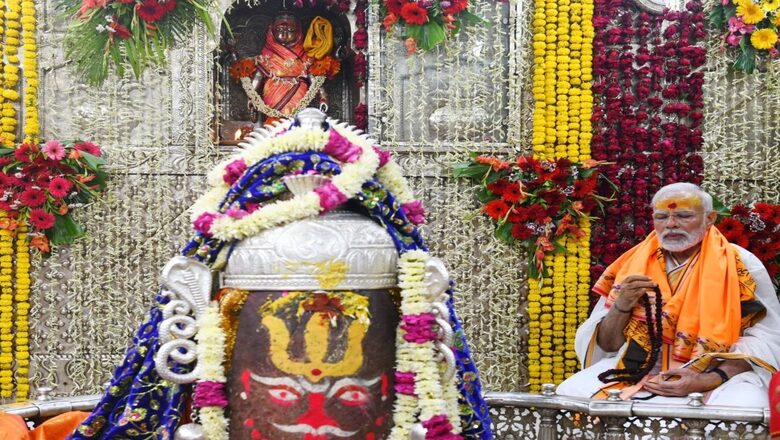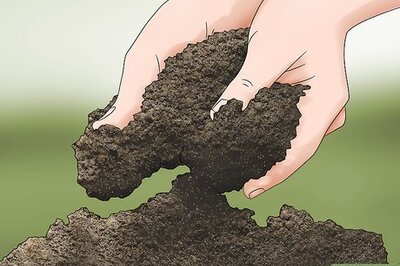
views
Bharat is a nation with a rich and diverse cultural heritage that has been shaped by its ancient history, religions, languages, arts, and traditions. India’s culture is a source of pride and identity for its people and a global attraction for tourists and scholars. However, it has faced many challenges and threats from foreign invasions, colonialism, and modernisation. Many of the cultural symbols and monuments have been damaged, neglected, or destroyed over the centuries. Sadly, past governments led by the Congress turned a deaf ear towards cultural development due to their appeasement politics. Recent derogatory comments made by DMK Leader and rebranded UPA partner, Udhayanidhi Stalin, reflects his lack of appreciation for Sanatana Dharma, our culture, and heritage.
In the last decade, there has been a renewed effort to revive and restore India’s cultural glory, led by Prime Minister Narendra Modi. Several projects and initiatives were initiated that aimed to rejuvenate, refurbish, and renovate India’s temples and heritage sites, which are not only places of worship but also centres of education, art, music, dance, and culture. The temples and the heritage sites represent the essence of India’s civilisational legacy and serve as pillars of its cultural identity.
To preserve and promote India’s cultural heritage, the Modi government has initiated various policies and projects since 2014. These include the policies for the restoration and development of cultural sites and monuments, the promotion of traditional arts and crafts, the celebration of cultural festivals and events, and the enhancement of international cooperation and recognition of India’s culture.
The PRASAD scheme (Pilgrimage Rejuvenation and Spiritual Augmentation Drive) aims to develop and beautify pilgrimage destinations across India by improving the infrastructure, facilities, and services at selected sites. Historical places with a long civilisational history such as Varanasi have experienced tremendous development with the Kashi Vishwanath Corridor project, which revamped the ghats, roads, and temple complexes. Similarly, the Mahakal Lok project in Ujjain, Madhya Pradesh and the Maa Kamakhya Corridor in Guwahati, Assam brought a new pilgrimage experience to the devotees and thus helped to boost tourism and local employment.
Chardham Mahamarg Vikas Pariyojna project, a pilgrim circuit in the Himalayas, was initiated with the aim to connect all four dhams (Gangotri, Yamunothri, Kedarnath, and Badrinath) and involves the construction of highways, tunnels, and railway tracks for around 900 km. The restoration of Kedarnath dham, which got damaged in the 2013 floods and the restoration of Somnath temple in Gujarat reinforces the commitment of the Narendra Modi government towards cultural preservation.
The HRIDAY scheme (Heritage City Development and Augmentation Yojana) aims to preserve and revitalise the heritage cities of India by developing their core heritage infrastructure and services. The scheme was implemented in 12 cities namely Ajmer, Amaravati, Amritsar, Badami, Dwarka, Gaya, Kanchipuram, Mathura, Puri, Varanasi, Velankanni and Warangal to restore and beautify the historical monuments and buildings and the development of heritage walk parks and corridors. The HRIDAY scheme is expected to improve the quality of life and environment and improve awareness of the heritage value of the cities.
Kashi Tamil Sangamam was organised by the Ministry of Education in 2022 to celebrate, reaffirm and rediscover the age-old links between Tamil Nadu and Varanasi. The month-long programme brought together scholars, experts and practitioners from various fields of knowledge and culture from both regions and facilitated academic exchanges, seminars, discussions and workshops on various topics. It has successfully helped to increase collaboration and cooperation among various institutions and organisations from both regions. India’s cultural heritage has received a significant boost as 251 invaluable antiquities have been repatriated so far, with 238 reclaimed only after 2014. These recoveries reflect the Modi government’s strong commitment to safeguard and restore the nation’s cultural treasures.
The Modi government’s work on cultural revival and preservation has not only benefited India’s culture but also its economy, society, and environment. By restoring and developing India’s cultural sites and monuments, the government has created employment opportunities, boosted tourism revenue, enhanced civic pride, fostered social harmony, and raised global awareness. By promoting and supporting India’s traditional arts and crafts, the Indian government has empowered artisans, preserved skills, improved livelihoods, encouraged innovation, and enriched diversity.
By celebrating and showcasing India’s cultural festivals and events, the Modi government has strengthened national unity, promoted regional identity, increased cultural exchange, and inspired creativity. The government’s work on cultural revival and preservation is a testament to its vision of ‘Ek Bharat Shreshtha Bharat’ and its commitment to making India a culturally vibrant and prosperous nation. It is also a tribute to India’s glorious past and a promise for its bright future.
The author is National Member, BJYM Policy Research Training (PRT) division. Views expressed in the above piece are personal and solely that of the author. They do not necessarily reflect News18’s views.


















Comments
0 comment